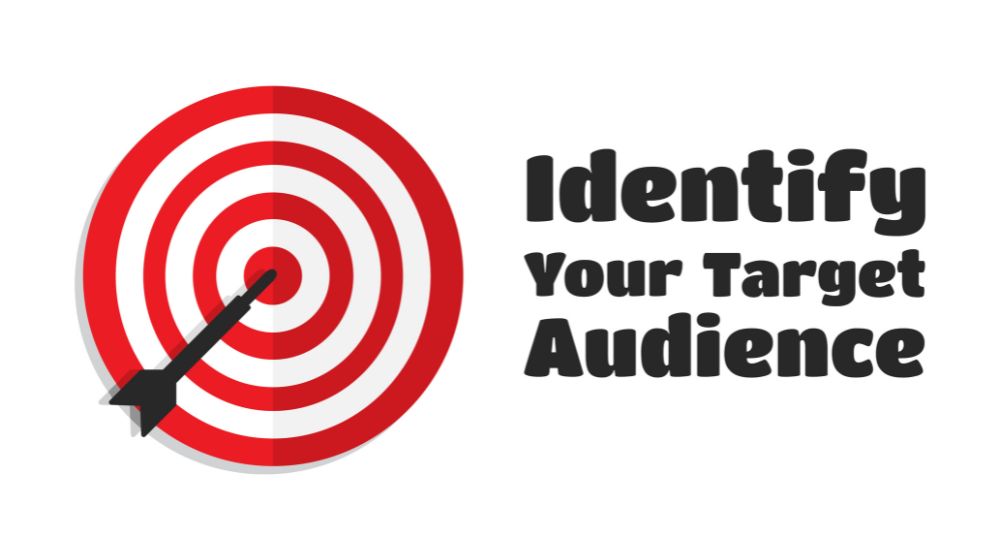Do you know that Identifying Your Target Audience Will Help You Determine many things? Are you struggling to identify or understand your target audience? Then, I will give you six questions to ask to understand your target audience.
The great thing about targeting your audience is that it allows you to create an ad campaign that perfectly matches your customers’ interests. As a result, your ads will be more likely to get clicked and converted. Targeted ads will also be more relevant to your users.
Relevant target ads increase conversion rate.
Related: How to Optimize for Keyword Search Intent 2022
Identifying Your Target Audience: Who Would Most Likely Be Your Target Audience

- What Is a Target Audience
- How To Find Your Target Audience
- Who Would Most Likely Be Your Target Audience
- Who Are the Target Audience
- Buyer Persona: How To Build Customer Personas
What Is a Target Audience
If you had a physical shop where people walked in, you would meet and talk to your customers daily.
But suppose we’re doing much of our business through the website and email. In that case, it’s very easy to become misaligned with our target customer or not understand who our target customer is.
But the danger is that without having a tight match between your message and your customer, you risk your marketing not being as effective as it should be.
So deeply understanding your target audience is key.
Before I give you the questions to ask to narrow down and understand your target audience, you might need to brainstorm to find your target audience in the first place and get familiar with what they’re like.
Identifying Your Target Audience
So there are a few different ways that you can do this.
1. Facebook Audience Insights
The first way is to do some good ‘old-fashioned Facebook stalking. Yes, that’s right, you can go and find your customers on Facebook and do some stalking to learn about their lives.
Check at their family situation:
- What sort of house do they live in.
- What do they spend their time doing?
- What are their interests?
What we want to do is be able to profile our target customers as we do of our friends. If someone asks you about your friend, and asks if your friend would like something for Christmas? You know if your friend would like that.
We need that kind of match with our target customer.
Of course, your customers can have lots of different personality types. Still, we need a good understanding of what our target customer likes and doesn’t like.
2. Reddit
Another great place to do some audience research, and one of the methods that our content team uses to research a target customer is to go onto Reddit and look at the sort of people asking questions about your product or service or problem that you solve.
Reddit’s an absolute goldmine for people who feel completely at ease asking questions in their language.
Reddit is a great place to ask questions about anything. You’ll get answers from all around the world, and you can even ask questions in your own language! Redditors will also help you out if you’re struggling with something, and you can always comment on other posts to give feedback and suggestions.
Look at the types of language. Compare the languages between those who are asking the question and those who are answering the question. And see if there’s any mismatch or misunderstanding.
It’s a great place to do some audience research.
3. Talk To Your Customers.
But above all, my absolute favorite way to do audience research is the phone. Nothing beats picking up the phone and talking to your customers to find out what they are like.
We sometimes send out an Amazon voucher in return for a 15, 25-minute, or 35-minute call with a group of customers, and what we’re trying to do on that call is understand what their lives are like. So we’re not just asking questions about the business, like how did you find us? Or, what made you choose to use it? Or, how would you pitch us to someone like you?
But we’re also looking to understand more about their life in general.
- What keeps them awake at night?
- What are they worried about in the future?
- What are they most looking forward to?
- What are their favorite things to do?
- What do they do when they’re not buying your product or service?
Now, as you do a bunch of these calls, you’ll begin to pick out commonalities between your target customers. And it helps you build this mental image of your target audience.
You can do Customer Research by:
- Speaking to your customers
- Meeting them at trade shows or expos.
Buyer Persona: How To Build Customer Personas
Customer research is an important step before starting any digital marketing campaign.
First, you must understand what kind of customers you want to attract and why they should buy your product.
Once you have done your research, you can create a profile of your ideal customer.
What we want is actually to be able to make generalizations about your target customer so that we can visualize them as a single person or a few single people.
We don’t want to think of our target audience as a group because we then allow ourselves to be a bit blurry about the details.
Be very specific about the characteristics of your perfect customer. You’re going to attract people around the outside of that character.
Age:
The first question to ask is how old is your target customer. Now, this might feel like a bit of a surface question to ask, and like it doesn’t have much relevance, but actually, it can be really important because, to a large extent, this can define how you reach that person.
So, for example, if you’re targeting an older demographic, you will not be on TikTok. So there’s some basic audience targeting stuff.
If you’re targeting 75-year-olds, you’re not going to spend your time marketing on TikTok, for example.
We’ve also got the life stages and the different needs that people have at different stages.
This has a lot of importance for the sort of messages that you use in your marketing.
Say, for example, that you’re targeting professionals in their 20s. Many of your messaging might want to be about proving yourself, earning your stripes, and showing those around you that you’re valuable and can do something.
Whereas if you’re targeting professional people later in their careers, you might have a different message about making things easier.
I’m making massive generalizations here, and you’ll need to understand your target audience to make those for your customer. Still, the point is that you want to have a good idea of how old your customer is.
One great example is a dental client I remember conversing with a few years ago. And they’d just had a website built by a company. They said you know what, one thing that doesn’t work for us is the images we’re using on the website because this business specializes in dental implants, and many dentists’ websites are pretty much just young, happy people with perfect teeth.
The trouble is, that’s not the target audience for dental implants. Instead, dental implants are predominantly sold to older people.
So because the images on the website didn’t match the target audience, that website was underperforming because the target audience arrived on the site and saw that the website was not for them and left.
So you want to ensure a good match between your audience’s age and the images you’re showing on your website. And also the sort of messages that you’re sharing in your marketing.
Question number two is: Where does your perfect customer live?
There are all sorts of subtleties to this question. But one of the main reasons that you want to understand this is for ad targeting and improving the performance of the adverts that you’re running.
For example, you might be able to focus your ads on one particular city or one particular area where you know your target audience is right there.
And by not targeting your ads in other areas, you can save the budget to put into this productive area.
For example, we have a client that sells high-end men’s shoes, and we’ve had a lot of success targeting particular streets and areas in London.
We’ve targeted higher-income bracket areas and areas where people are more likely to have more disposable income because that’s where their customers live. So understanding where your customers live can be a good way of saving your ad budget and focusing it on the people most likely to buy now.
Gender
Question number three is a potentially contentious one. But what’s your customer’s most common gender? Again, this is potentially contentious because many businesses don’t feel like they have a gender bias.
Often, if you’re selling women’s underwear, that’s not even a good example. So it’s fairly common for a business to say we don’t have a gender bias because they don’t think there’s any reason that either men or women would want to buy from them. But looking at the analytics and the data behind the purchases can often tell a different story.
So here, you can see the traffic for this particular client site. So we started working with them in October when they saw this steady increase in sales. And this product sells gifts for children.
And what’s interesting about this is you can see the different gender splits here. In this, you can see that females account for 77% of all the website traffic. So we might think this business is focused on females. But if we look over here, we’ll see that females convert half as well as males.
So although females make up 3/4 of the traffic to the site, they only make up 60% of the sales. And men make up 40% of the sales, so men are more likely to convert when they’re on the website.
There are many possible reasons for this.
First, understand who is making the buying and research decisions.
Then adjust your content and the site imagery according to who is making purchases.
We never want to exclude anyone, and I’m not saying that you should target one type of person or another or exclude anyone in your marketing.
What we need to be careful to do, though, is to look at the reality of the purchases on our website and ensure that our marketing reflects that.
Question number four is: how do you promote to your target audience?
And this is really about the sort of advertising methods and messages that will be most effective for them.
For example, suppose you’re targeting people with a very long decision process. In that case, they need to see something a lot before they decide to buy, which might mean that things like remarketing and retargeting adverts could work well for you because they will constantly see that ad throughout their decision-making process.
Whereas if you’re selling products that are very impulse-purchase-led, that’s going to mean that you probably want to pay a higher cost per click.
Well, that means you might want to pay more for new traffic to your website.
You would want that knowing that if this is a very impulse-led audience, or you’re selling a very impulse-friendly product, then you want that person on the website as soon as they think about it.
For example, you’re willing to pay a high cost per click on Google Ads to get them there because once they come on, they’re much more likely to buy.
If your audience is doing a lot of research and comparing different options, you might want to consider running ads on an informational page. It may be like a blog post or a buyer’s guide and retargeting people on that page.
Because we’re not expecting someone to convert the first time, so really what we want to do is get them on our website so that we know they’re going through that decision process, and then you can retarget your ads to them so that when they’re ready to buy, they see an ad for you.
You Might Also Like:




Comments